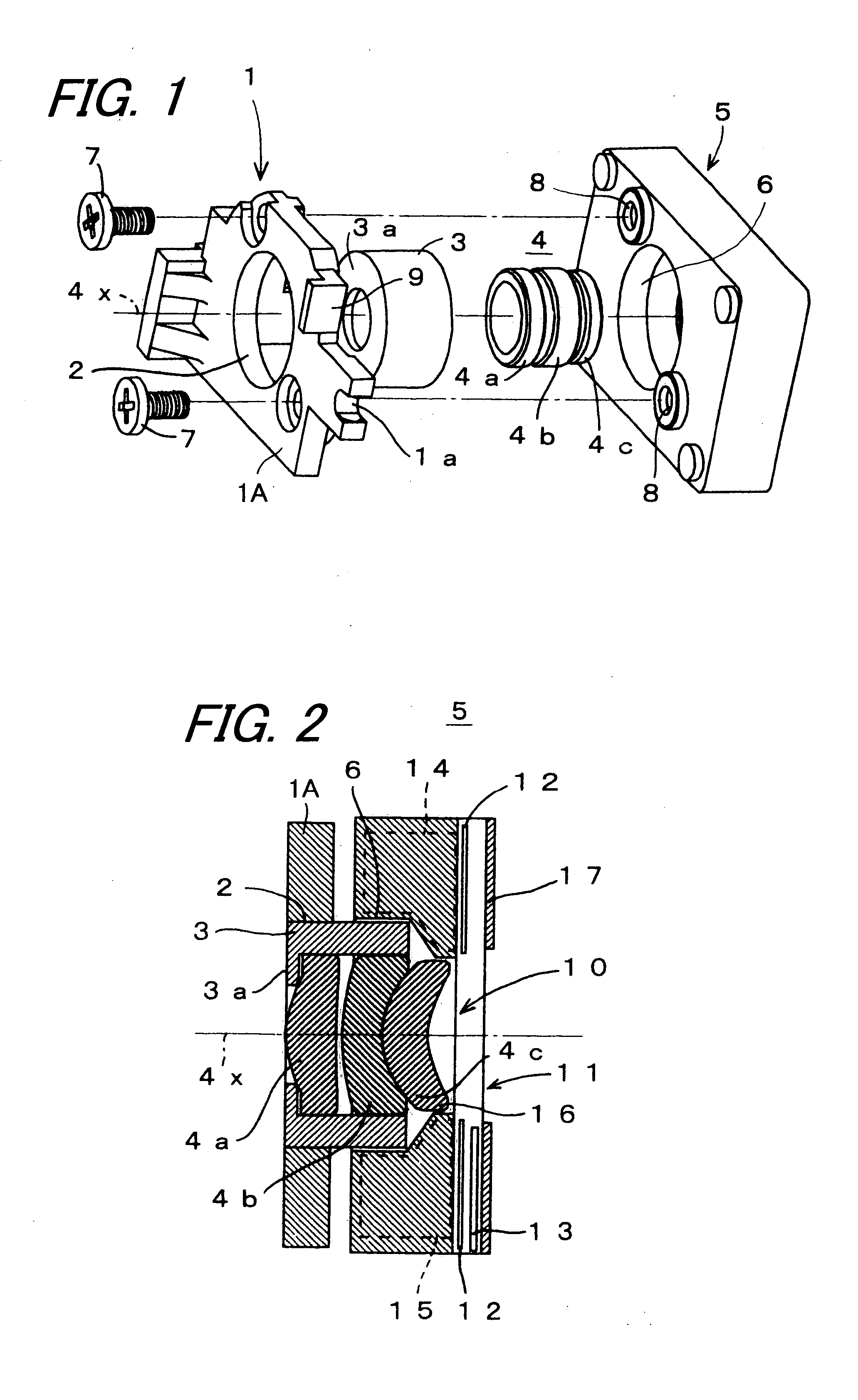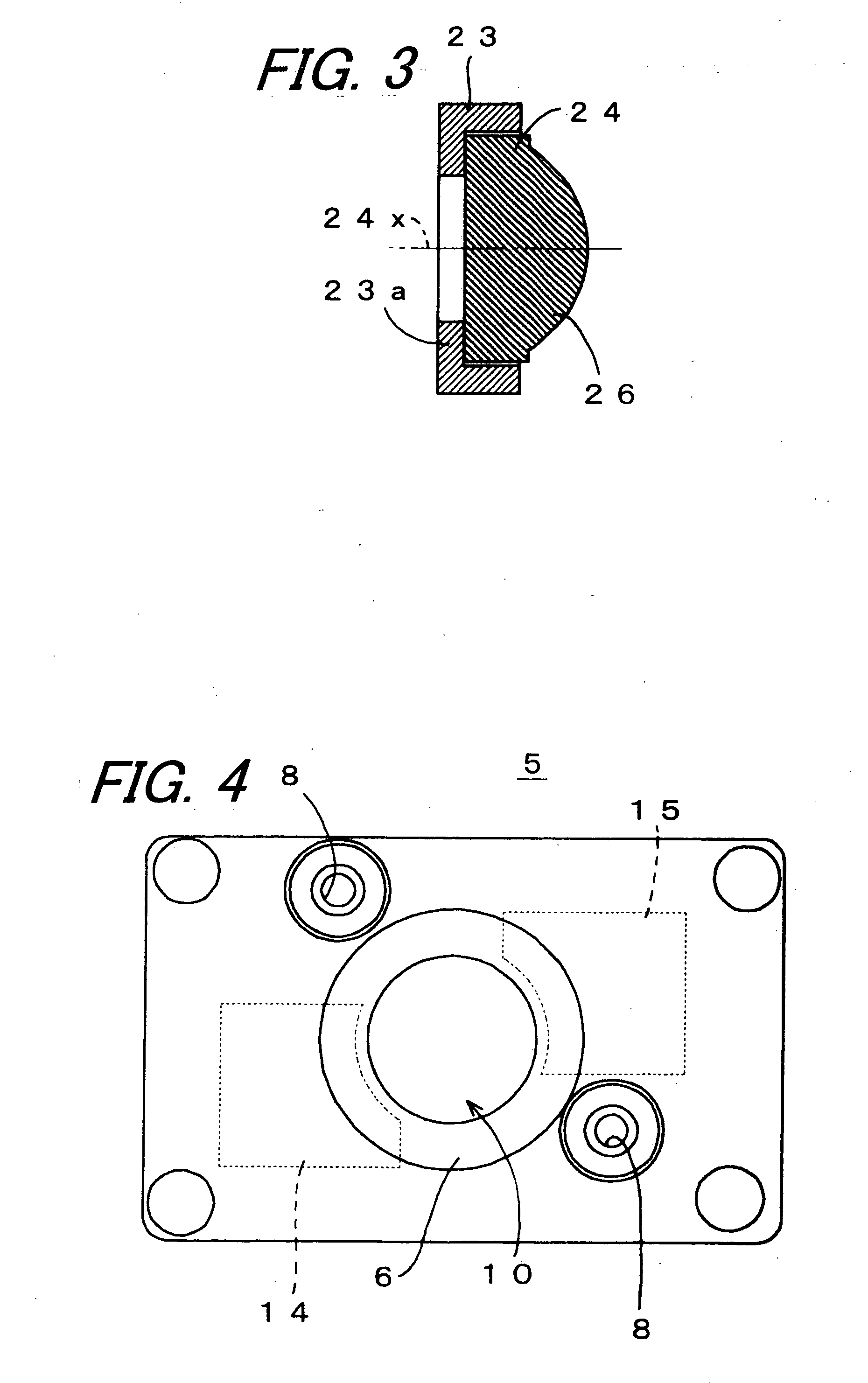Lens-shutter coupling unit
a technology of lens-shutter and coupling unit, which is applied in the direction of shutters, mountings, instruments, etc., can solve the problems of difficult miniaturization of shutter units, insufficient size reduction of shutter units, and complicated assembly, so as to reduce the fluctuation of optical axis deviation and the deviation of optical axis.
- Summary
- Abstract
- Description
- Claims
- Application Information
AI Technical Summary
Benefits of technology
Problems solved by technology
Method used
Image
Examples
Embodiment Construction
[0056] Now referring to the drawings, preferred embodiments of the invention are described below.
[0057]FIGS. 1 and 2 show a schematic configuration of a lens-shutter coupling unit according to an embodiment of the invention. FIG. 1 is an exploded perspective view showing a coupling structure of a lens holder and a shutter unit, and FIG. 2 shows a sectional configuration of the lens holder and the shutter unit whey they are coupled with each other.
[0058] As shown in FIG. 1, a lens holder 1 comprises a lens holder main body 1A including a holder opening 2 and a barrel 3 that is a lens fixing frame. The barrel 3 is fixedly bonded to the holder opening 2. A lens group 4 is fixed to the barrel 3 by press-fitting or bonding. The lens group 4 is constituted of, for example, three lenses 4a, 4b, and 4c. Two lenses 4b and 4c of the three lenses on the side of a shutter unit 5 are combined lenses that are fixedly bonded to each other in advance. The shutter unit 5 is provided with an openin...
PUM
 Login to View More
Login to View More Abstract
Description
Claims
Application Information
 Login to View More
Login to View More - R&D
- Intellectual Property
- Life Sciences
- Materials
- Tech Scout
- Unparalleled Data Quality
- Higher Quality Content
- 60% Fewer Hallucinations
Browse by: Latest US Patents, China's latest patents, Technical Efficacy Thesaurus, Application Domain, Technology Topic, Popular Technical Reports.
© 2025 PatSnap. All rights reserved.Legal|Privacy policy|Modern Slavery Act Transparency Statement|Sitemap|About US| Contact US: help@patsnap.com



